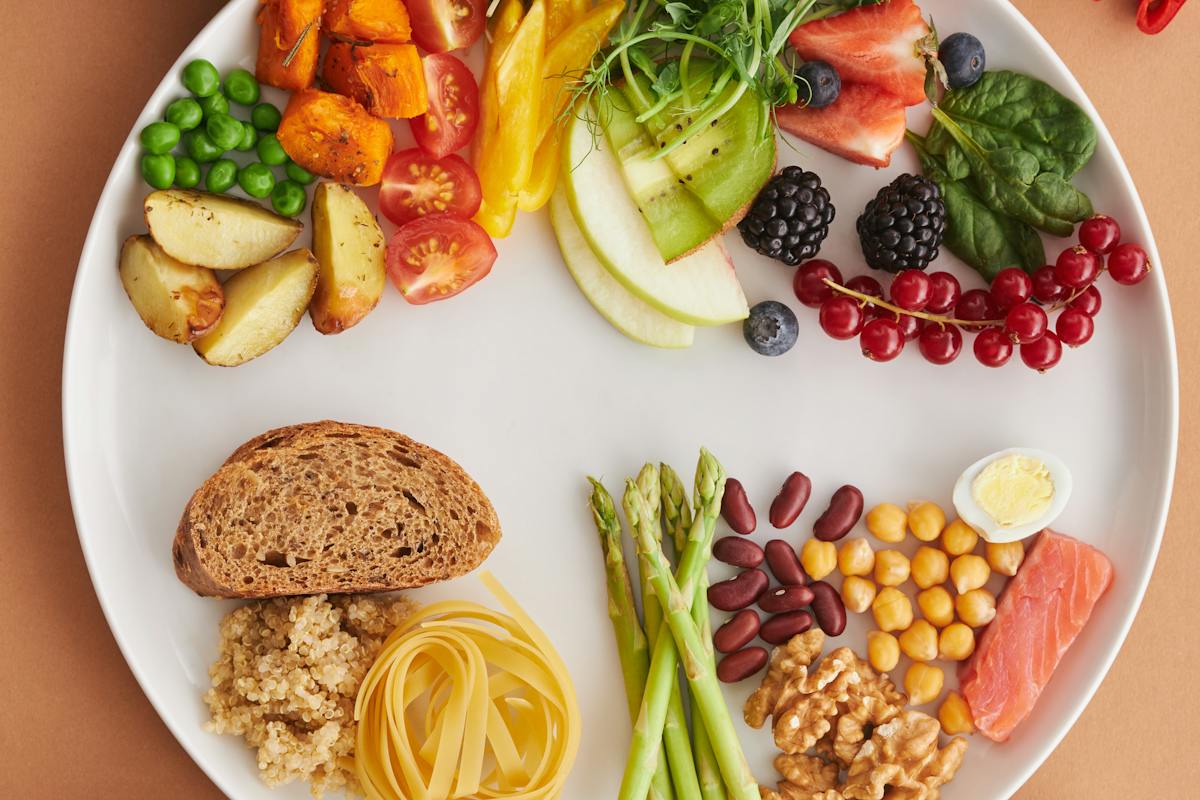- Nutrition is a crucial factor for healthy growth for 9-month-old babies.
- Signs that your baby is ready to start eating solid foods include good head and neck control.
- Our sample 9 month baby food chart contains a full-day meal plan to help you decide what solid foods to introduce to your baby.
- Many parents think BLW (baby-led weaning) is better than traditional feeding because it creates a fun eating experience for babies.
- Make sure to give your baby the proper nutrition with supplements like iron and vitamin D.
The first few years of a baby’s life are the building foundation for future growth and development. Therefore, proper nutrition is vital for a healthy and happy baby.
Instead of worrying about your child’s health, you can learn how to make a well-planned 9 month baby food chart, which guarantees the little ones get all the nutrient-rich foods they need.
Let’s dive into this comprehensive guide to carefully picking iron- and vitamin-rich foods that will benefit your baby in the long run.
Nutritional Needs at 9 Months
As the child grows, it has different needs and requirements that parents should be familiar with. By the age of 9 months, babies should be consuming solid foods along with breast milk or formula in their 9 months baby food chart.
Baby’s Development
Every child is different, but the main milestones of a 9-month-old baby are babbling, playing, crawling, and getting themselves to stand in some cases. Nutrition is a key factor for the little ones to grow safely and experience these milestones with lots of energy.
Nutrient Requirements
Nine-month-olds have specific nutrient requirements, the most important of which are proteins, calcium, vitamins, omega-3 acids, and iron. These are quintessential for this growing stage. A lack of these nutrients will lead to nutrient deficiencies, manifesting as sleepiness and a lack of energy, bad eating habits, and stunted growth. Statistics show that newborns need about 110-135 kcal/kg/day, and as the baby grows, you should lower the nutritional intake to approx. 100 kcal/kg/day for the first year.

Preparing for Solid Foods
You can start introducing solid foods to your child after the 6th month. However, signs usually indicate when the baby is ready to start eating solid foods. So, parents also need to follow some general recommendations on introducing solids into their child’s diet.
In some cases, babies could show signs of readiness way earlier on. Some babies might take 4 or 5 months, while others might not want to eat anything except purees and breast milk for a year. So, you should always look at the most common signs that the baby is ready for solids:
Signs of Readiness
When a baby is ready for solid foods, you will know it. The obvious sign that your baby is ready for solids is if it can sit up straight and has good head and neck control. Additionally, when your little one shows interest in eating instead of playing with the food, you will know it’s time.
Parents who have gone through this stage of baby feeding state that a great time to start solids is at six months; however, you should look out for the above signs for the best results.
Introduction to Solids
Doctors advise starting with softer foods first and easing your way into solids. You can do this by introducing cereals with a thicker consistency and playing with different food textures to see what your baby likes.
The best first solid foods for your baby are soft and gooey, like mashed potatoes, or a chunkier version of your go-to single-ingredient meals, like banana puree. In the next few weeks, try giving your baby chopped foods, finger-sized foods of soft broccoli, or pasta.
The 9-Month Baby Food Chart
To help you decide what foods to give your child, here’s a food chart for 9 month baby:
Sample Meal Plan
For breakfast, you can make:
- 2-4 ounces of iron-fortified cereal mixed with about a teaspoon of peanut butter
- Mashed banana pancakes made from 1 tbsp batter per pancake
- Pineapple carrot puree
- Hard-boiled eggs.
You could also opt for a simple morning snack like:
- Soft (or cooked) fruit
- Plain, whole milk yogurt
- Teething biscuits
- Avocado toast.
Here are some lunch ideas:
- Mashed sweet potatoes
- Soft carrots
- Pasta
- Pumpkin
- Soft-cooked broccoli
- Whole wheat toast with mashed avocado (cut into strips)
- Mashed.
After lunch, you can give your baby a tasty afternoon snack consisting of soft-cooked veggies or fruits:
- Apples
- Bananas
- Asparagus
- Broccoli
- Pears.
Finally, here are some dinner ideas:
- Poached salmon with avocado
- Diced tofu with smashed chickpeas
- Baby meatball with mashed potatoes
- Soft-cooked shredded chicken.
You can give your baby 6 ounces of breastmilk or formula between meals to complete the 9 month old baby food menu.

Nutrient-Rich Food Choices
Your baby needs to get their daily nutrients, and as parents, we need to give our children tasty and nutrient-dense food options for each meal. Fruits and vegetables are great for vitamins and fiber; proteins and iron can be found in meals such as eggs and meat. Additionally, avocados and fish are great examples of healthy fats.
Make sure you’re giving your baby soft foods to prevent choking, and get used to the fork being your best friend, as you’re going to be mashing every food possible. Look at our other article regarding how to create a nutrient-rich baby food chart.
Homemade Baby Food
You don’t need to use store-bought baby food because any fruit and vegetable can be turned into homemade baby food. Preparing baby meals at home will ensure your baby gets safe, tasty, and nutritious meals.
Benefits of Homemade Food
Homemade food is a way better option solely because there’s less processing. Fresh, whole fruits and veggies are way tastier and more nutritious for your little one as well.
Homemade baby food is super easy to prepare, and you can find a multitude of easy-to-make recipes, such as a tropical fruit salad or lentil spinach stew, that you can add to your 9 month old baby food chart.
Food Safety
Knowing the basic principles of food safety is key to keeping your baby healthy. Here are a few rules you should always abide by:
- Always wash your hands and utensils thoroughly before preparing the food
- Don’t keep food in the fridge longer than 2 days
- Make sure the baby eats the food immediately after opening it.
Children are the most affected group when it comes to foodborne illnesses. Every year, out of all people ill with a foodborne illness, about 30% are children under 5. So, make sure to follow these simple rules to decrease the chances of your child having food poisoning.
Allergenic Foods
Common allergens are a decent cause of concern for parents because there is always a risk of developing a severe allergic reaction. To avoid allergy-related emergencies, you should pay attention to your baby’s reaction to any of the most common allergenic foods.
Common Allergenic Foods
Always read the list of ingredients of the store-bought baby food to see if it contains allergens your baby is sensitive to. Here are some foods to look out for in case of allergies:
- Peanuts
- Soy
- Tree nuts
- Eggs
- Shellfish or Fish
- Wheat.
According to a recent study, 1.4% of children have peanut allergies. So, you should introduce your baby to these foods one at a time after the 6th month when your baby is ready for solids.
Allergen Testing
The best way to test whether your child is allergic at home is to see whether your baby shows any symptoms in response to the common allergens. When you’re making your food chart for 9 month baby, make sure to include mashed fish, peanut butter, or wheat cereals.
If your child shows any allergy symptoms, have a doctor’s check-up. With the new allergy testing advancements that have been made, you can check the specific food you suspect with a molecular allergology, or you could do a multiparameter immunoblot.
Vegetarian and Vegan Baby Options
Most baby foods are made from plant-based ingredients, so there’s no need to worry if you’re a vegetarian or vegan. However, you’ll need to carefully plan the meals so the baby receives plenty of nutritious protein-rich vegetarian or vegan foods.
Vegetarian Babies
You can make a 9 month baby food chart with time if you carefully look through your options as a vegetarian. However, babies need to consume nutrient-rich foods, so make sure to find protein and vitamin-rich replacements for dairy and meat. If the baby is already eating solids, you should start including mushrooms, tofu, lentils, or nuts in the 9 month old meal plan.
Vegan Babies
Vegan diets are even more strict than vegetarian ones, so you must pay attention to the iron, calcium, and B12 you give your child. Your baby needs enough energy for growth, so if you’re feeding your baby a vegan diet, it’s recommended that you breastfeed for about 2 years. If the baby is not breastfed, a soy or rice-based formula should be given.
Baby-Led Weaning (BLW)
BLW is a method of introducing solid foods that are complementary to the baby’s breastfeeding diet. Parents allow babies to eat the foods they choose without pressuring them to eat something they don’t enjoy. It makes eating a relaxed and enjoyable experience for the little ones.
Introduction to BLW
The baby-led weaning method is a famous way of introducing solid foods to babies and letting them self-feed so that eating becomes a positive, interactive experience. In this study, the parents’ experiences vary, but most are positive.
Parents who practice BLW recommend it because even if your baby isn’t eating much or treating food as a toy at first, this method will help your baby develop better motor skills faster.
BLW Tips and Safety
Here are some tips for an enjoyable BLW experience:
- Let your child choose and trust their process
- Stick to single-ingredient foods
- Avoid honey, unpasteurized dairy, and processed foods for the first year.
If you’re worried about your baby’s health and weight, this info might help. About 86% of babies fed using the BLW method were of normal weight in comparison to 78% that were fed traditionally.

The Role of Supplements
Supplements are essential for your baby if they’re not getting enough nutrients from their food intake. However, always consult a pediatrician before adding any to your 9 month old diet.
Iron and Vitamin D
Both iron and vitamin D play a crucial role in baby growth as they deliver oxygen to tissues throughout the body, provide growth and brain development, and help obtain and retain calcium.
Experts recommend including a daily supplement of 10 micrograms of vitamin D for breastfed babies in your 9 month baby food chart. However, some argue that iron supplements are unnecessary for the baby, and you should first consult your pediatrician.
Consultation with a Pediatrician
Not all babies need to take vitamin supplements. Breast milk is full of nutrients, especially if the mother takes enough supplements herself. However, experts recommend that babies take vitamin supplements after the 6th month, and vegans are advised to include B12 in their diet. It’s best to talk to your GP or pediatrician for personal recommendations.
Key Takeaways
Creating a nutrient-dense 9 month baby food chart containing fruits, vegetables, and homemade meals isn’t very hard. Pick the items you like from our curated meal plan and include them in your personalized version.
Keeping your baby healthy should be your top priority, especially in its initial childhood years, and creating a well-balanced 9 month old food schedule now will help you see long-term results.


